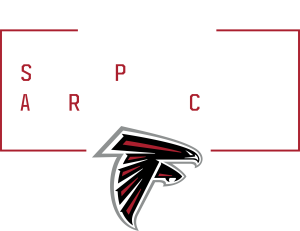Emory SPARC
The new state-of-the-art EMORY Sports Performance And Research Center (SPARC) located at the Falcons Flowery Branch headquarters will serve as the nation’s leading center for research and dissemination of injury prevention for sport in young athletes.
Located at the Falcons Flowery Branch Headquarters
Emory’s research team has demonstrated that sports and activity related injuries can be prevented with innovative technologies that measure the body’s movement and response to biofeedback for self-guided movement correction training. This transformational center in collaboration with the Atlanta Falcons will provide the opportunity to create a self-sustaining program for youth and high school athletes throughout the entire state of Georgia for enhanced long-term physical and mental well-being.
Injury Prevention
SPARC is the nation’s leading center for research and dissemination of injury prevention for sport in young athletes. We utilize state-of-the-art virtual and augmented reality technologies in concert with high-precision motion analysis to specifically target areas in need and reduce injury risk. Our biomechanical methods are supplemented with advanced neuroscience technologies to support the discovery of more central mechanisms contributing to injury-risk movement. SPARC is the premier center for answering research questions related to injury prevention in sport.
3D Motion Analysis
SPARC houses the world’s most innovative technologies to bring the field of play to a controlled laboratory environment. SPARC’s laboratory experiments simulate the dynamic and chaotic sport environment and provide real-time visual biofeedback for self-guided movement correction using both virtual and augmented reality technologies. Athletes’ movements are continuously monitored and quantified using 3D motion analysis and force plate technology.
Neuroscience
SPARC transforms prior approaches aiming to discover brain contributions to human movement by seamlessly integrating 3D motion analyses during brain functional magnetic resonance imaging of gross lower extremity movement. Prior approaches have been limited to resting or visualization methods of dynamic activity, whereas SPARC employs brain imaging paradigms consisting of highly ecologically valid lower-extremity movement concomitant with MR-safe 3D motion analysis.


